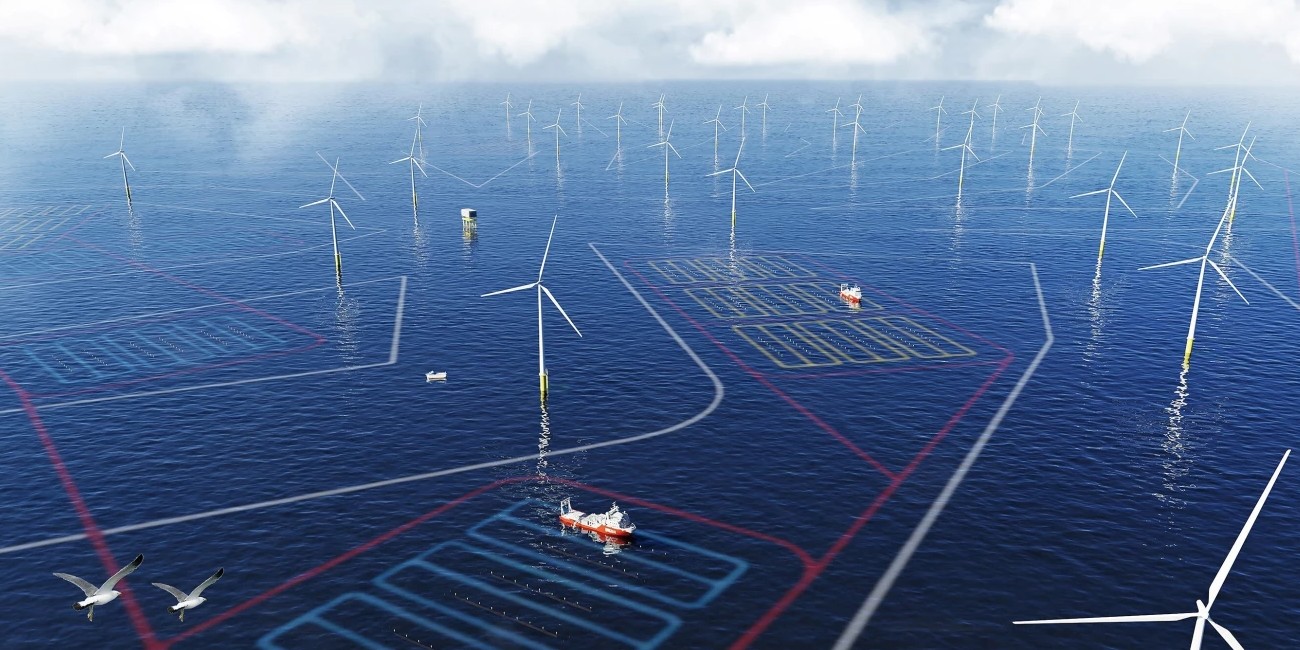Here comes the world’s first offshore wind seaweed farm

E-commerce giant Amazon is funding the world’s first commercial-scale offshore wind seaweed farm that will sit between turbines – and this project has the potential to achieve a lot of great things.
The post Here comes the world’s first offshore wind seaweed farm appeared first on Electrek.
E-commerce giant Amazon is funding the world’s first commercial-scale offshore wind seaweed farm that will sit between turbines – and this project has the potential to achieve a lot of great things.
Offshore wind seaweed farm
The North Sea Farm 1 project, off the Netherlands coast, will consist of a a 10-hectare (25-acre) seaweed farm that is expected to produce at least 6,000kg of fresh seaweed in its first year.
It’s expected to become operational by the end of the year, and the first seaweed harvest is expected in spring 2024. The hope is that the project evolves into a blueprint for offshore seaweed farming that can be rolled out globally.
Amazon’s news release doesn’t give any details about the wind farm itself – whether it already exists or whether it needs to be built, how many turbines, whether it will actually generate clean energy – but it would appear from the CGI below that Amazon posted that it’s a floating offshore wind farm:
The North Sea Farmers, a collective of Dutch seaweed farmers and businesses that are working to promote the sustainable cultivation and use of seaweed in the North Sea region, is leading the project. Researchers Plymouth Marine Laboratory, seaweed extract makers Algaia, and marine contractors Van Oord are also taking part in the project, among others.
Amazon is funding the project with a €1.5 million ($1.6 million) grant, which comes from its $100 million global Right Now Climate Fund.
What’s the point of cultivating seaweed?
By locating the farm specifically in unused space between turbines, the project is able to expand seaweed cultivation in the otherwise heavily used North Sea.
If seaweed farming were to occupy all of the space occupied by wind farms – and that’s expected to be around 1 million hectares (2.47 million acres) by 2040 – it could reduce millions of tonnes of carbon dioxide annually.
And seaweed has a lot of really cool benefits; it absorbs CO2 during photosynthesis, which can help to mitigate the effects of climate change. In fact, seaweed can absorb more CO2 per unit area than land-based plants, making it an effective tool for carbon sequestration.
It can provide habitats for marine life, including fish, crabs, and shellfish. By creating new habitats, seaweed farming can help shore up marine biodiversity.
Plus, we can eat it: It’s a nutritious food source that doesn’t require freshwater, fertilizer, or pesticides to grow. It can also be harvested year-round, and it can be used for a wide range of products, from food and cosmetics to biofuels and fertilizers.
Eef Brouwers, manager of farming and technology at North Sea Farmers, said:
Potentially, up to 85,000 full-time jobs could be created in the European seaweed sector by replicating North Sea Farm 1 across the North Sea, repurposing the space among wind farms.
These jobs would not only be in the farming process but also in the production and sales of seaweed-based products.
Read more: A Danish wind turbine giant just discovered how to recycle all blades
Photos: Amazon
UnderstandSolar is a free service that links you to top-rated solar installers in your region for personalized solar estimates. Tesla now offers price matching, so it’s important to shop for the best quotes. Click here to learn more and get your quotes. — *ad.
FTC: We use income earning auto affiliate links. More.
